Real Estate Agents: Contract law class in beautiful new construction luxury home in Heart of Scottsdale!
June 22, 9:30 a.m. to 1:00 p.m.
Contract to Closing: Contingencies, Clauses and Cures for three hours of contract law.
Enjoy the class in a brand new luxury home in the Heart of Scottsdale. The home is approximately 4,341 square feet priced at $1,820,000. Tour the home at 9:30 a.m. and meet the builder. Class is from 10:00 a.m. to 1:00 p.m.
Fox Haven by Cachet Homes
Class location: 10332 N. 79th Way, Scottsdale, 85258 (Hayden and Gold Dust, just south of Shea Blvd.)
MUST RSVP FWilcox@GCTA.com or 602.648.1230 Cost is ($10.00) dollars.
Class by Internal Dynamics School of Real Estate 13565 N. 102nd Place, Scottsdale 85260 602.363.2960 mbarnewolt@msn.com
We will use real life scenarios involving the AAR Residential Resale Real Estate Purchase Contract.
Scenarios
Inspection period
BINSR
Seller concessions
Release of earnest money
Risk of loss clause
Contingency clauses versus promise clauses
When do I deliver a cure period notice
Breach of contract
Commitment for title
What is FIRPTA?
There will be a review of the contract timelines
p.s. I served on one of the subcommittees at the Arizona Association of REALTORS which made the changes to the new contract released February 2017.
Fletcher R. Wilcox
Contact me to open your next escrow with our Scottsdale office located at 8520 E. Shea Blvd., Suite 115, 85260.
Fletcher R. Wilcox is the author of The Wilcox Report and Vice President of Business Development for Grand Canyon Title. His market analysis has been referenced in the Wall Street Journal, Bloomberg News, HousingWire.com and National Mortgage News. He served on one of Arizona Association of Realtor’s 2017 Residential Resale Contract subcommittees. He may be reached at FWilcox@GCTA.com or by phone at 602-648-1230.
Recent media appearances
May 17, 2017 in the Phoenix Business Journal http://www.bizjournals.com/phoenix/news/2017/05/11/existing-home-sales-highest-since-2006-up-18-over.html
May 12, 2017 KTAR https://ktar.com/story/1570668/maricopa-county-home-sales-up-18-percent-near-prerecession-numbers/
Television interviews
My interview with Gerri Willis on the Fox Business News Network
Interview with Jim Belfiore on Square Off Arizona. Topic: The President and Housing.
Interview on Horizon on housing market.
Scottsdale Report: Residential Real Estate Trends for April 2017. Estimated months of supply for single family homes and more!
This report is on Scottsdale sales and new listing trends for single family, apartment style, townhouse and patio homes.
The data was compiled from the Arizona Regional Multiple Listing Services, Inc. (ARMLS).
In April, of the four residential categories, single family homes had the most sales at 476 or 59% of all sales. Second was Apartment Style / Flat homes with 161 sales.
Single Family Homes Estimated Months of Supply by Price Range
As can be seen in the table, homes in the lower price ranges generally have lower estimated months of supply. Generally when there is a four month of supply or less it is considered a seller’s market. Out of the 476 sales only ten were either a short sale or lender-owned sale.
April 2017
As can be seen, sales in three of the four categories were up this April over last April. Townhouse sales had the greatest increase at 34%, while single family sales were down 4%. Even though single family homes were down this April compared to last April, single family home sales are up ten percent for the first four months of 2017 (see the table below in the section Sales and New Listing Trends for the First Four Months of 2017).
How did new monthly listings for the four categories compare in April 2017 to April 2016?
There were less new monthly listings in each of the four residential categories this April compared to last April.
Sales and New Listing Trends for the First Four Months of 2017
Below enter your email address to subscribe to this blog and receive notifications of new updates to The Wilcox Report by email.
Contact me to open your next escrow with our Scottsdale office located at 8520 E. Shea Blvd., Suite 115, 85260.
Fletcher R. Wilcox is the author of The Wilcox Report and Vice President of Business Development for Grand Canyon Title. His market analysis has been referenced in the Wall Street Journal, Bloomberg News, HousingWire.com and National Mortgage News. He served on one of Arizona Association of Realtor’s 2017 Residential Resale Contract subcommittees. He may be reached at FWilcox@GCTA.com or by phone at 602-648-1230.
Recent media appearances
May 17, 2017 in the Phoenix Business Journal http://www.bizjournals.com/phoenix/news/2017/05/11/existing-home-sales-highest-since-2006-up-18-over.html
May 12, 2017 KTAR https://ktar.com/story/1570668/maricopa-county-home-sales-up-18-percent-near-prerecession-numbers/
Television interviews
My interview with Gerri Willis on the Fox Business News Network
Interview with Jim Belfiore on Square Off Arizona. Topic: The President and Housing.
Interview on Horizon on housing market.
First Quarter 2017: Residential Sales Volume Highest in Eleven Years!
First Quarter 2017 Results
Previously Owned Single Family Homes
Maricopa County
Data compiled from the Arizona Regional Multiple Listing Services, Inc.
Sales volume in the first quarter of 2017 was the highest since 2006, which was before the great real estate recession. First quarter 2017 sales volume was 18.1% higher than the first quarter of 2016.
Sales volume for this report is the total of the sale prices for previously owned single family homes. An example of sales volume would if a real estate agents sold 20 homes and the sales price for each home was $250,000 their sales volume would be $5,000,000.
Sales volume is a health indicator of a real estate market. It not only speaks on the number of sales, but also on their sale price. It may show if prices are decreasing, flat, or increasing. For example, in the first quarter of 2017 there were 15,622 sales for a sales volume of $5,016,013,713. The average or mean sale price was $321,086. Compare this to first quarter of 2012 when there were more sales, 16,405, but sales volume was lower, $3,144,327,127. The average sale price then was $191,668.
The 2017 first quarter average sale price of $321,086 was $15,471 or 5% higher than the first quarter of 2016 average of $305,615.
A Formula for Price Increases
While sales were up 12.4% in the first quarter of 2017 year-over-year, new inventory was flat. There were 1,726 more sales and 81 less new listings.
If the trend of more sales and less inventory continues prices will go up in the price ranges with heavy demand.
Coming soon will be the estimated months of supply by price range.
Below enter your email address to subscribe to this blog and receive notifications of new updates to The Wilcox Report by email.
Open your next escrow with our Scottsdale office located at 8520 E. Shea Blvd., Suite 115, 85260.
Fletcher R. Wilcox is the author of The Wilcox Report and Vice President of Business Development for Grand Canyon Title. His market analysis has been referenced in the Wall Street Journal, Bloomberg News, HousingWire.com and National Mortgage News. He served on one of Arizona Association of Realtor’s 2017 Residential Resale Contract subcommittees. He may be reached at FWilcox@GCTA.com or by phone at 602-648-1230.
Television interviews
My interview with Gerri Willis on the Fox Business News Network
Interview with Jim Belfiore on Square Off Arizona. Topic: The President and Housing.
Interview on Horizon on housing market.
Who will be the top real agent, broker and more!
Old Town Scottsdale 2017 Friday Night Industry Party
Awards will be for
- Residential real estate agent of the year
- Residential real estate broker of the year
- Residential rookie agent of the year
- Residential team of the year
- Commercial managing principal of the year
- Commercial real estate broker of the year
- Home inspector of the year
- Certified appraiser of the year
- Escrow officer of the year
- Title sales representative of the year
- Mortgage loan originator of the year
Arizona jobs projected to increase by 138,553 and Greater Phoenix jobs by 115,258. More jobs will keep the fire going for already hot housing market.
On March 9, the Arizona Office of Economic Opportunity released job projections. Jobs in Arizona are projected to increase by 138,553 from the Second Quarter of 2016 through the Second Quarter of 2018. The majority of the increase in jobs is expected to be in Greater Phoenix. Jobs in Greater Phoenix are projected to increase by 115,258. Greater Phoenix in this report is defined as Maricopa and Pinal counties.
This increase in jobs, along with a growing population, will continue to fuel the demand for residential housing. Greater Phoenix is currently in the midst of a very hot demand for previously owned single family properties in many price ranges.
According to the Arizona Regional Multiple Listing Services, Inc., sales of previously owned single family homes in the first two months of 2017 are fourteen percent higher than for the same period last year. The number of sales in January and February 2017 were 9,999 compared to 8,777 for the same period last year.
While sales are up inventory is down. The number of previously owned new monthly listings in January and February 2017 were 5% or 860 less than for the same period last year.
When writing a contract, be prepared for your buyers to compete against multiple offers when a property is priced at market.
Expect prices to go up in many prices ranges.
The majority of the increase in jobs will be in Greater Phoenix
To read the report go to https://laborstats.az.gov/sites/default/files/documents/files/ST_IndProjReport.pdf
| 2016-2018 Projected Job Growth by Region | ||||
| Area Name | 2016 Estimated Total Employment Level | 2018 Projected Total Employment Level | Numeric Growth | Annualized Percentage Growth |
| Arizona | 2,852,181 | 2,990,734 | 138,553 | 2.4% |
| Phoenix MSA1 | 2,051,434 | 2,166,692 | 115,258 | 2.8% |
| Tucson MSA2 | 382,515 | 392,583 | 10,068 | 1.3% |
| Balance Of State3 | 414,363 | 427,176 | 12,813 | 1.5% |
| 1) Maricopa and Pinal Counties | ||||
| 2) Pima County | ||||
| 3) All other areas in Arizona less Maricopa, Pinal, and Pima Counties
Arizona’s industry employment projections are produced in conjunction with the U.S. Department of Labor (U.S. DOL), Employment and Training Administration (ETA). Fletcher R. Wilcox is V.P. of Business Development and a Real Estate Analyst at Grand Canyon Title Agency. He is author of www.TheWilcoxReport.com. His market analysis on residential real estate in Greater Phoenix has been mentioned in the Wall Street Journal, Bloomberg News, MarketWatch, HousingWire.com, National Mortgage News, Arizona Republic and the Phoenix Business Journal. He has been a guest speaker on local radio and both local and national TV. He teaches real estate agents strategies on marketing and instructs real estate classes in residential contract writing and Arizona title procedures. Fletcher started snowboarding in 2006. He is not very good. Fletcher may be reached at mailto:FWilcox@GCTA.com 602.648.1230 |
||||
When Is The Peak Season For New Listings And Sales? Fourth Quarter 2016 New Listings And Sales Should Be Higher than Last Year!
This is an update of an article published on July 20, 2016. This version includes third quarter 2016 new monthly listings and sales. The information in this report is from the Arizona Regional Multiple Listing Services, Inc.
Real estate agents make their commissions as listing agents and as selling agents. So at what times of the year are agents the busiest listing seller’s properties and closing on sales with buyers? What times of the year are listings and sales the slowest?
I researched the number of new listings and sales for previously owned single family homes in Maricopa County, Arizona (sometimes defined as the Greater Phoenix Market). I broke down the years 2014, 2015 and 2016 into quarters. The data is from the Arizona Multiple Listing Services, Inc. (ARMLS).
The Findings
 New Listings: Which Quarter Had the Most and the Least?
New Listings: Which Quarter Had the Most and the Least?
The first quarter, the winter quarter, had the most new listings. Then like a stair step, the number of new listings declines in each of the following quarters. In both 2014 and 2015 the fourth quarter had considerable less new listings than the first quarter. Then as the chart below shows, new listings shoot up again in the first quarter of the New Year.
What is significant in 2016? More Sellers Listing Their Homes.
So far in 2016, more homes have been listed than in either 2015 or 2014. For the first three quarters of 2016 there were 66,544 new listings compared to 63,216 in 2015 and 63,404 in 2014. So new monthly listings in 2016 are approximately five percent higher than in either 2015 or 2014.
Sales: Which Quarter Had the Most and Least?
While the first quarter has the most new listings, the second quarter has the most sales – at least in 2014 and 2015. The chart below shows single family sales. In 2014, the quarter with the least number of sales was the first quarter. In 2015, it was a toss-up for the least number of sales between the first quarter and the fourth quarter. There were only thirty-six more closings in the fourth quarter over the first quarter in 2015. The second best quarter for sales has been the third quarter.
What is significant in 2016? More Sales! Higher Prices!
Sales in the first three quarters of 2016 broke the 50,000 mark. There were 50,050 sales compared to 48,117 in 2015 and 43,510 in 2014. So sales were 4.0% higher than in 2015 and 15.1% than 2014. What may be more significant is the sales price. The median sales price in 2016 for the first three quarters is $249,900 compared to $233,000 in 2015 and $217,000 in 2014.
Don’t Stop Working in the Fourth Quarter!
While new listings and sales generally slow-down in the fourth quarter, there will still be plenty of activity. New listings and sales should exceed last year’s fourth quarter results and will end around 18,000 listings with sales close to 14,000!
Fletcher R. Wilcox is V.P. of Business Development and a Real Estate Analyst at Grand Canyon Title Agency.
He is author of www.TheWilcoxReport.com. His market analysis on residential real estate in Greater Phoenix has been mentioned in the Wall Street Journal, Bloomberg News, MarketWatch, HousingWire.com, National Mortgage News, Arizona Republic and the Phoenix Business Journal. He has been a guest speaker on local radio and both local and national TV.
He teaches real estate agents strategies on marketing and instructs real estate classes in residential contract writing and Arizona title procedures. Fletcher started snowboarding in 2006. He is not very good.
Fletcher may be reached at FWilcox@GCTA.com 602.648.1230
Anticipatory Contract Writing
Published in the Arizona REALTOR’s Voice
by on September 9, 2016
There are 30 blank lines at the beginning of Section 8, Lines 311-340, Additional Terms and Conditions in the AAR Residential Resale Real Estate Purchase Contract (Contract). The purpose of these lines is for the buyer, before presenting an offer to the seller, to put in language that changes, adds to, or subtracts provisions in the body of the Contract.
The key to writing provisions language in the Additional Terms and Conditions section is to do so in clear and understandable terms. Knowledge of the Contract and its timelines is essential in constructing good language.
There are times when a buyer places language into the Additional Terms and Conditions Section in anticipation of situations that may occur in a transaction. The buyer wants the property. Emotions are high. This is when mistakes may be made. In the two scenarios below, a buyer makes the earnest money nonrefundable to present a better offer to the seller. Is the language clear and understandable?
You be the judge.
Scenario One
Language written in the Additional Terms and Conditions section reads, “Earnest money to be nonrefundable after ten day inspection period.”
On day seven after Contract acceptance, the Buyer’s Inspection Notice and Seller’s Response (BINSR) was delivered to the seller giving the seller the opportunity to correct five disapproved items. According to the Contract timeline, the seller then has five days to respond to the buyer. In this situation, the seller responded to the buyer on the fifth day, which was day twelve after contract acceptance. The seller checked the box on the BINSR stating, “Seller is unwilling or unable to correct any of the items disapproved by the Buyer.”
At the beginning of the transaction the buyer was hot for the property. Fifteen days later, upon receiving the seller’s response declining to fix the five requested items, the buyer’s emotions toward the property have cooled. The buyer then canceled the Contract and demanded a return of the earnest money. The seller argued that the buyer can cancel, but the buyer doesn’t get the earnest money, they do. Seller argued the 10 day inspection period ended when the BINSR was delivered and that the buyer canceled after this period. The buyer countered that the 10 day inspection period includes the entire buyer disapproval process in section 6J.
We have an escrow dispute. Is the language written in Section 8 clear and understandable?
Clearer language on behalf of the buyer addressing when the earnest money would be nonrefundable may be, “Buyer’s earnest money shall be nonrefundable unless Buyer elects to cancel pursuant to Section 6J.” Section 6J includes the BINSR timeframes for both buyer and seller responses.
Scenario Two
Language in the Additional Terms and Conditions section reads, “Earnest money to be nonrefundable and released to seller on the twenty first day after contract acceptance.” The buyer wanted 20 days for due diligence and was willing to make the earnest money nonrefundable after this time.
On day 21 after contract acceptance, the seller requested and received the earnest money from the escrow company. Fifteen days later when the close of escrow date came, the transaction did not close and could not close due to an I.R.S. lien attached to the property. For the transaction to close, the seller either had to have the lien paid at close of escrow or obtain a waiver from the I.R.S. The seller was unable to perform either. The buyer delivered a Cure Period Notice to the seller for seller’s failure to close escrow.
On the fourth day after delivery of the Cure Period Notice the seller was in breach, so the buyer canceled the transaction and demanded a return of the earnest money which, according to the language written in Section 8, was now in the seller’s possession.
Will the buyer be able to get the earnest money from the seller? Is the language written in Section 8 clear and understandable?
The buyer and their agent, in making the earnest money nonrefundable and released to the seller, did not anticipate what happens if the seller breaches the Contract. Clearer language on behalf of the buyer may be, “On the twenty first day after contract acceptance, earnest money shall be nonrefundable. However, in the event seller breaches the Contract, buyer is entitled to a return of the earnest money.”
Conclusion
Whether representing a seller or buyer, anticipatory contract writing is first thinking through possible scenarios that might arise based on the market or situation of the buyer, seller or home and addressing those situations with clear and understandable language. This type of writing is enhanced with a strong knowledge of the Contract and its timelines.
This article is not intended as legal advice. Consult your designated broker and legal counsel.
 Fletcher R. Wilcox is V.P. of Business Development for Grand Canyon Title Agency. He teaches contract law renewal hours and is author of The Wilcox Report.
Fletcher R. Wilcox is V.P. of Business Development for Grand Canyon Title Agency. He teaches contract law renewal hours and is author of The Wilcox Report.What time of the year are there the most new listings and the most real estate sales? A review of the numbers in Greater Phoenix.
When are Real Estate Agents the Busiest?
By
Fletcher R. Wilcox
Grand Canyon Title Agency
Real estate agents make their commissions as listing agents and as selling agents. So at what times of the year are agents the busiest listing seller’s homes and closing on sales with buyers? What times of the year are listings and sales the slowest? Does real estate activity really slow down in the hot summer months?
So, what I did was research the number of new listings and sales for existing single family homes in Maricopa County, Arizona. I broke down the years 2014, 2015 and the first half of 2016 into quarters. The data is from the Arizona Multiple Listing Services, Inc. (ARMLS).
The Findings
New Listings: Which Quarter Had the Most and the Least?
In both 2014, 2015 and in the first half of 2016 we saw the same pattern for new listings. The first quarter, the winter quarter, had the most new listings. Then like a stair step, the number of new listings declines in each of the following quarters with the fourth quarter having considerable less new listings than the first quarter. Then as the chart below shows, listings shoot up again in the first quarter of the New Year.
More New Listings and Sales in First-Half of 2016 Than in Either 2014 or 2015
When comparing the number of new listings in the first two quarters of 2016 there were 2,792 more new listings than 2015 and 1,280 than 2014. This increase in inventory along with job growth and population growth and boomerang buyers has fueled home ownership. There were 1,268 more sales in the first two quarters of 2016 than 2015 and a whopping 4,243 more sales than 2014.
Sales: Which Quarter Had the Most and Least?
While the first quarter has the most new listings, the second quarter has the most sales. The chart below shows single family sales. In 2014, the quarter with the least number of sales was the first quarter. In 2015, it was a toss-up for the least number of sales between the first quarter and the fourth quarter. There were only thirty-six more closings in the fourth quarter over the first quarter. The second best quarter for sales has been the third quarter.
There are More Sales in the Hot Summer Months Than You Might Think
If we compare sales in the third quarter, the hot weather months of July, August and September, to the best quarter, the second quarter, we saw a decline in sales of 12% in both 2015 and 2014.
However, the third quarter has been the second best quarter for sales. In 2015, third quarter sales were 18% higher than in both the first and fourth quarters.
Conclusions
In recent history, the first and second quarters of the year had the most new listings followed by the second and third quarters as the most sales. While real estate sales slow-down in the hot weather third quarter compared to the spring second quarter, the third quarter has been the number two quarter for most sales. While sales in the first and fourth quarters are the slowest, there is still lots of sales activity. Data shows sales in the first and fourth quarters range between 12,000 and 14,000. Look for sales in the fourth quarter of 2016 to be over 14,000 sales.
Fletcher R. Wilcox is V.P. of Business Development and a Real Estate Analyst at Grand Canyon Title Agency.
He is author of www.TheWilcoxReport.com. His market analysis on residential real estate in Greater Phoenix has been mentioned in the Wall Street Journal, Bloomberg News, MarketWatch, HousingWire.com, National Mortgage News, Arizona Republic and the Phoenix Business Journal. He has been a guest speaker on local radio and both local and national TV.
He teaches real estate agents strategies in marketing and instructs real estate renewal classes in residential contract writing and Arizona title procedures. Fletcher started snowboarding in 2006. He is not very good.
Fletcher may be reached at FWilcox@GCTA.com 602.648.1230
Arizona Real Estate: Why more Canadians may sell their U.S. Properties in 2016
This article was first published in the Arizona REALTOR® Voice on March 8, 2016.
by on March 9, 2016
Many Canadians own residential real estate in Arizona. They are especially attracted to the desert areas of Arizona during the winter when they can soak in the sun rather than shake off the snow.
Many got spectacular deals purchasing residential properties when prices were low and the Canadian dollar was close to being on par with the U.S. dollar.
Changes in the Canadian economy and dollar make it likely that there are now fewer Canadian buyers, but more sellers of their U.S. properties. According to the Wall Street Journal on February 25, Canada’s economy is under pressure because of a drop in oil prices. In 2015, the Canadian-to-U.S. dollar average was at .75 cents compared to .97 cents in 2011.
Let’s look at a scenario as to why more Canadians may sell their U.S. properties this year than in recent years.
If a Canadian bought a house in the U.S. in 2011 and paid $150,000 USD, they would have paid close to $155,000 CAD. In 2015, if that same property, because of appreciation, sold for $225,000 USD, a Canadian seller would receive $300,000 CAD, almost double what they paid in Canadian dollars in 2011. Quite a gain. So far in 2016, the Canadian dollar is even weaker against the U.S. dollar than last year.
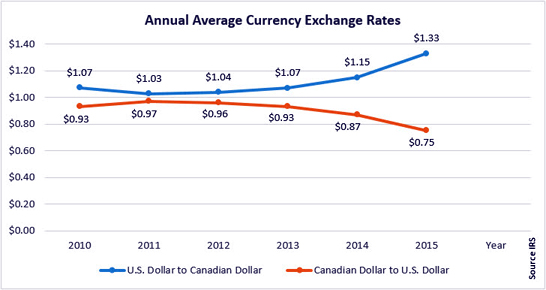
If a Canadian or if any foreigner, decides to sell their U.S. residential property, they should be aware of the Foreign Investment in Real Property Tax Act known as FIRPTA.
FIRPTA is the mandatory withholding of income tax on the disposition of U.S. real property interests by a foreign person(s) defined as a nonresident alien individual, a foreign corporation, a foreign partnership, trust or estate. According to the IRS, not only are sales under FIRPTA, but so are exchanges, gifts and transfers.
On February 17, the FIRPTA withholding tax rate increased up to 15% as demonstrated in the chart below:

According to FIRPTA, what is the buyer’s responsibility? A buyer is solely responsible for the FIRPTA withholding tax from a seller.
When the seller is a foreign person? The IRS states:
“In most cases, the transferee/buyer is the withholding agent. If you are the transferee/buyer you must find out if the transferor is a foreign person. If the transferor is a foreign person and you fail to withhold, you may be held liable for the tax.”
To help make buyers and sellers aware of FIRPTA, Arizona REALTORS® has addressed it in the Seller’s Property Disclosure Statement (SPDS) and Residential Resale Real Estate Purchase Contract (Resale Contract).
Lines 13 and 14 in the SPDS read:
“Is the legal owner(s) of the Property a foreign person or a non-resident alien pursuant to the Foreign Investment in Real Property Tax Act (FIRPTA)? Yes No. If yes, consult a tax advisor; mandatory withholding may apply.”Lines 135-138 in the Resale Contract read:
“IRS and FIRPTA reporting: Seller agrees to comply with IRS reporting requirements. If applicable, Seller agrees to complete, sign, and deliver to Escrow Company a certificate indicating whether Seller is a foreign person or non-resident alien pursuant to the Foreign Investment in Real Property Tax Act (“FIRPTA”). Buyer and Seller acknowledge that if the Seller is a foreign person, the Buyer must withhold a tax of up to 15% of the purchase price, unless an exemption applies.”
The seller in the Resale Contract agrees to comply with FIRPTA if they are a foreign person; if applicable, the buyer must withhold the tax. In the SPDS, the seller must indicate if they are a foreign person or non-resident alien; if they are, they should consult a tax advisor.
While different settlement agents may have different procedures, escrow officers are not equipped to give tax or legal advice concerning FIRPTA.
The IRS does not require the settlement agent to:
- Determine a seller’s status as a foreign person
- Decide how much FIRPTA tax should be withheld
- Decide if the seller qualifies for an exemption, or
- Complete FIRPTA forms
What then may a settlement agent do?
IF a buyer has determined that a seller owes FIRPTA tax, the escrow officer may assist them in collecting completed forms and withholding tax from the seller and buyer, and send the forms and taxes to the IRS on behalf of the seller and buyer. (Remember, there is no duty by the escrow officer to complete FIRPTA documents.)
IF a seller applies for an IRS certificate exempting or reducing FIRPTA withholding tax prior to the transaction closing, it is likely that the certificate from the IRS will not be received until post-closing. A settlement agent may agree to hold FIRPTA funds post-closing and send the funds to the IRS if certain conditions are met prior to the closing. If the required conditions are met, then both the buyer and seller will have to sign post-closing holdback instructions.
IF the requirements of a post-closing holdback are not met, the seller and buyer will have one of two options. The settlement agent may collect the proper forms and send in the withholding tax at the time of the closing. Or the seller and buyer mutually agree in writing that the FIRPTA funds may be transferred to an attorney or CPA’s trust account. The attorney or CPA will be responsible for the FIRPTA withholding amount.
Tips
If there is a FIRPTA withholding, both the seller and buyer will need either a social security number or a valid U.S. Individual Taxpayer Identification Number (ITIN) in order to process FIRPTA documents. If someone is not eligible for a social security number, they must apply for an ITIN.
Because of the length of time it may take to receive either a social security number or ITIN, it is a good idea to obtain one before a property is put on the market.
Also, talk with the escrow officer where the escrow will be processed prior to contract acceptance to find out what the officer will do on a FIRPTA transaction and what requirements must be met for a post-closing holdback.
A seller and buyer should always consult with a qualified CPA or tax attorney regarding FIRPTA.
Conclusion
In 2016, the Arizona real estate market will likely see more FIRPTA transactions with foreigners, specifically Canadians, selling their U.S. properties. A knowledge of FIRPTA by both the foreign seller and buyer will help ensure a smother closing.
Fletcher R. Wilcox is vice president of business development at Grand Canyon Title Agency
FWilcox@GCTA.com
602.648.1230

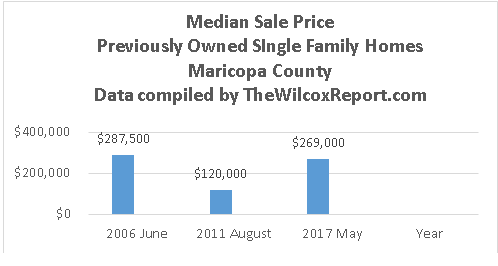
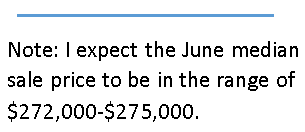



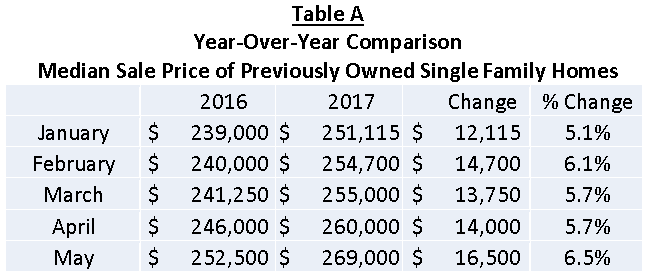
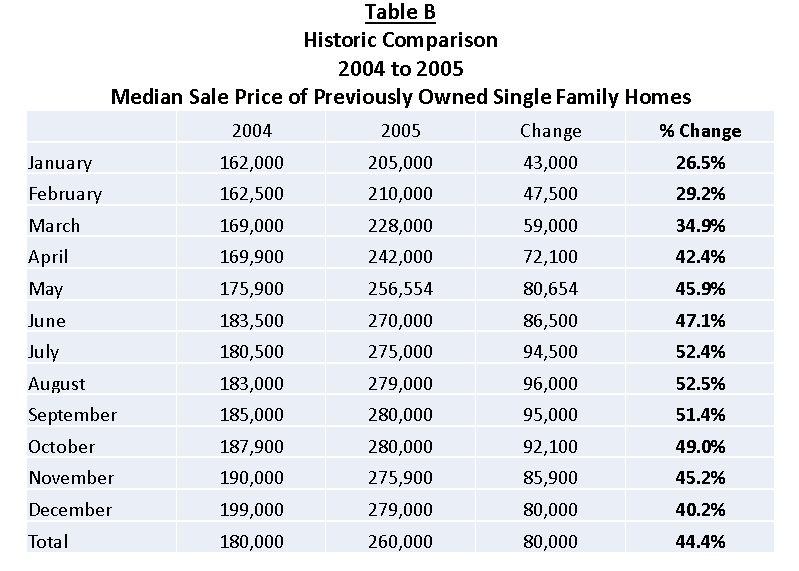
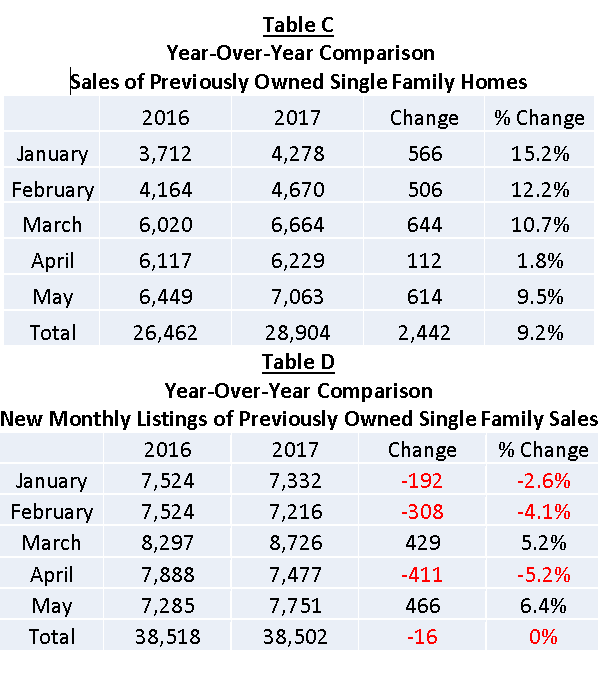
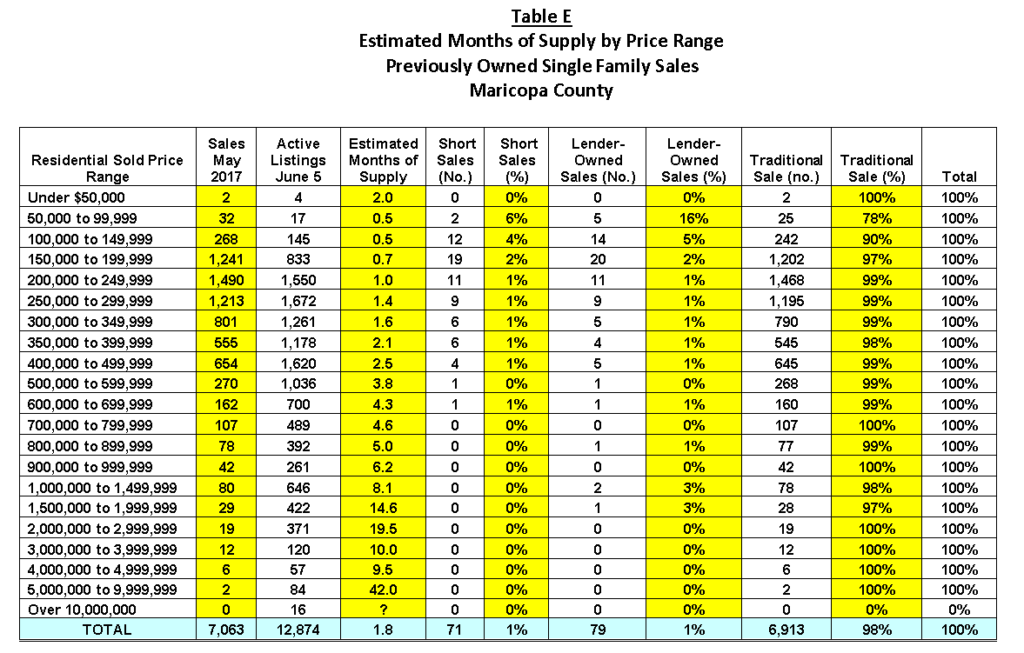


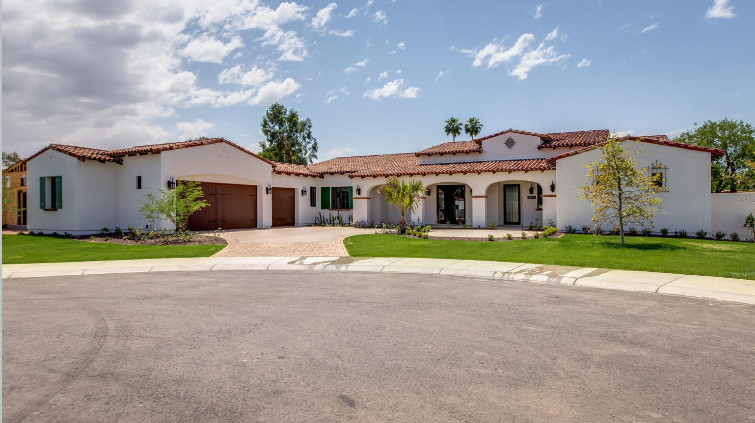


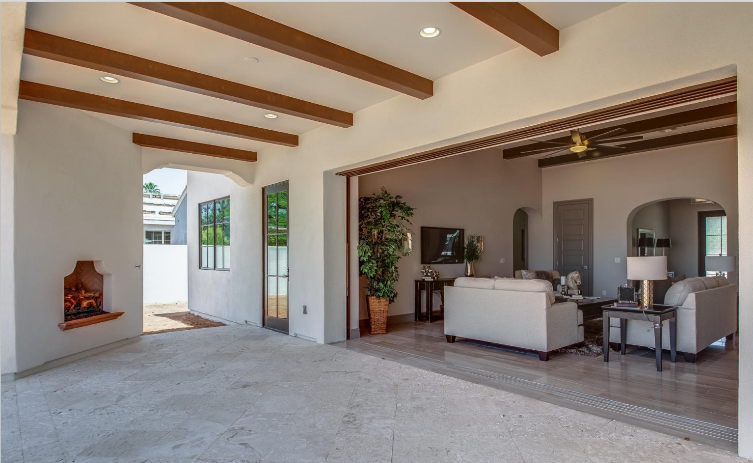
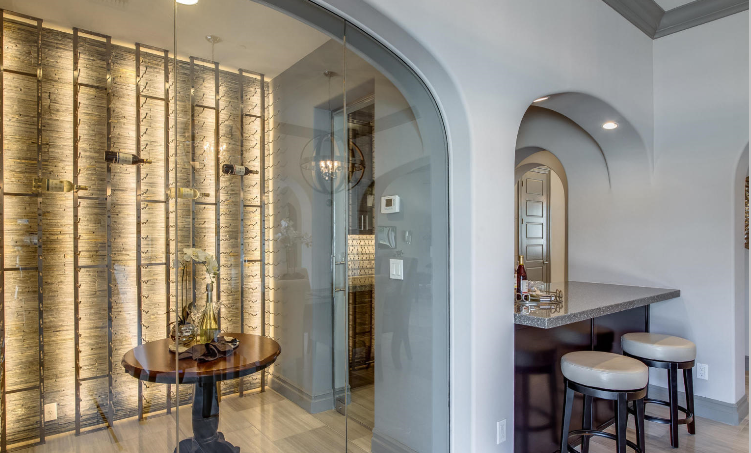

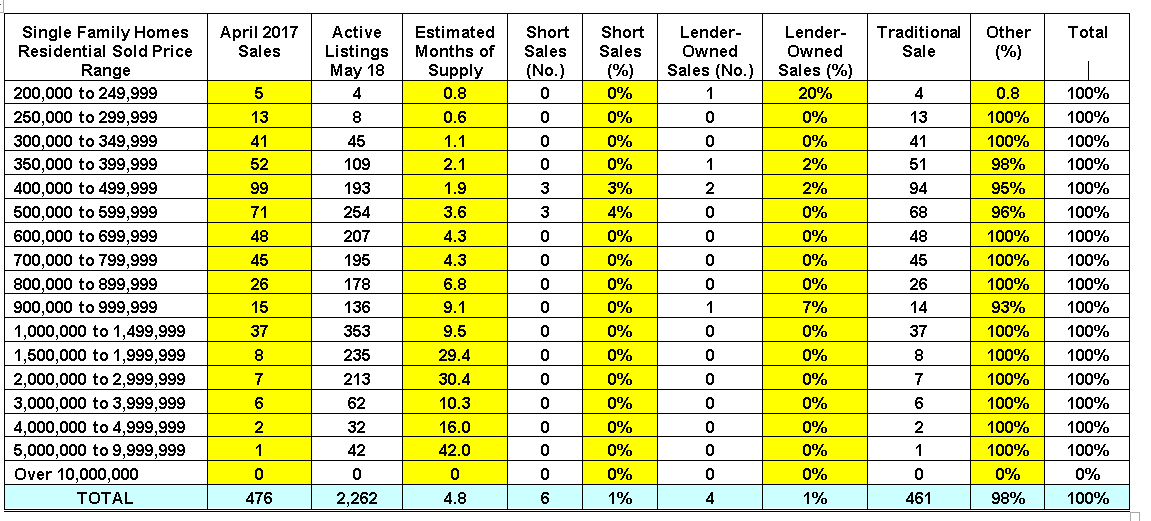






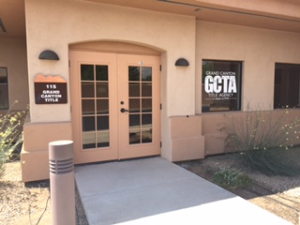
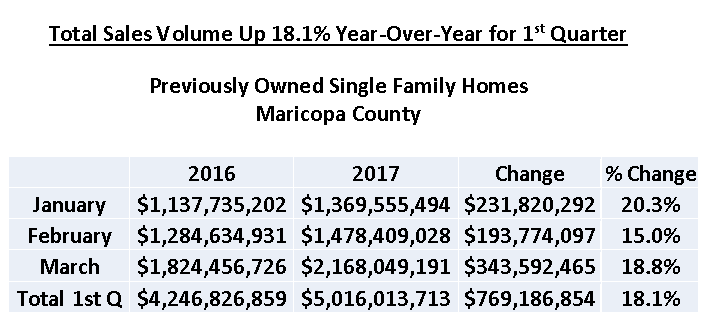
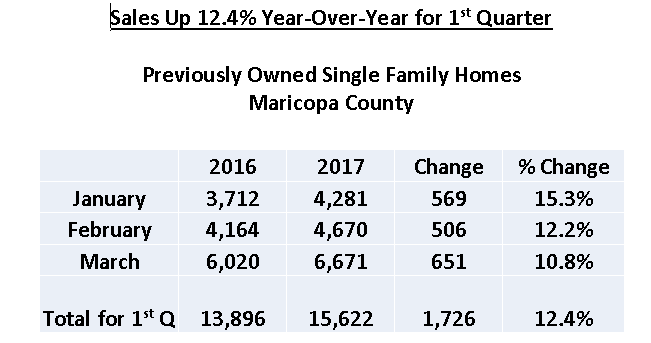

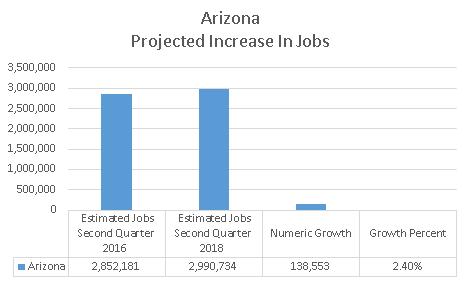
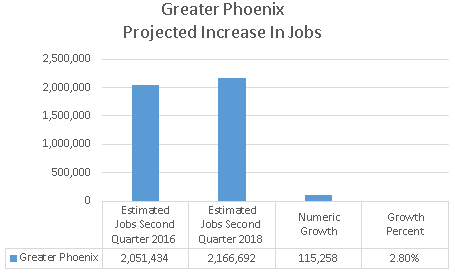

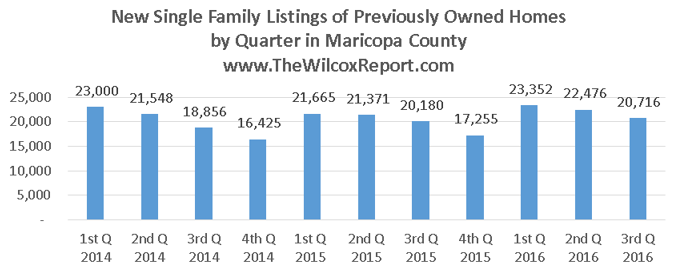
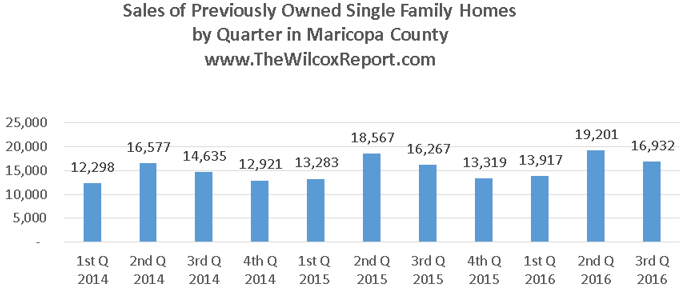
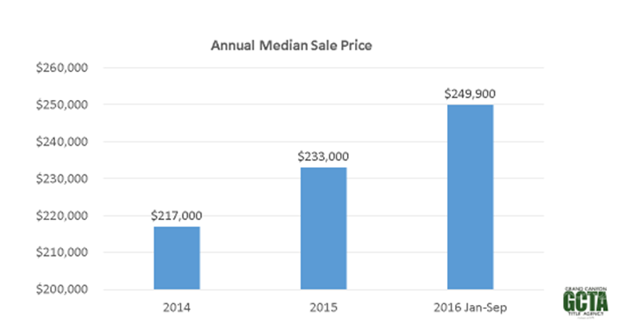

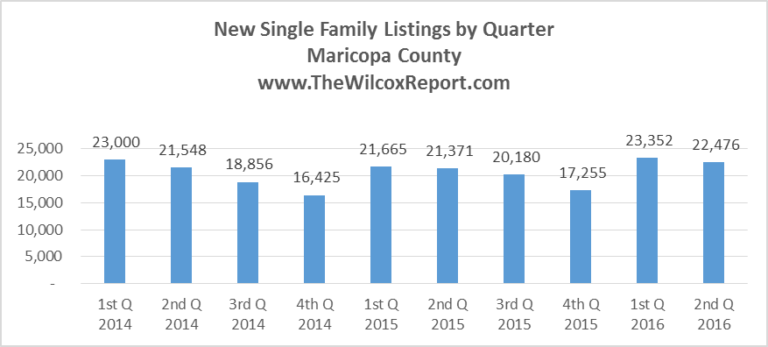





Follow Fletcher